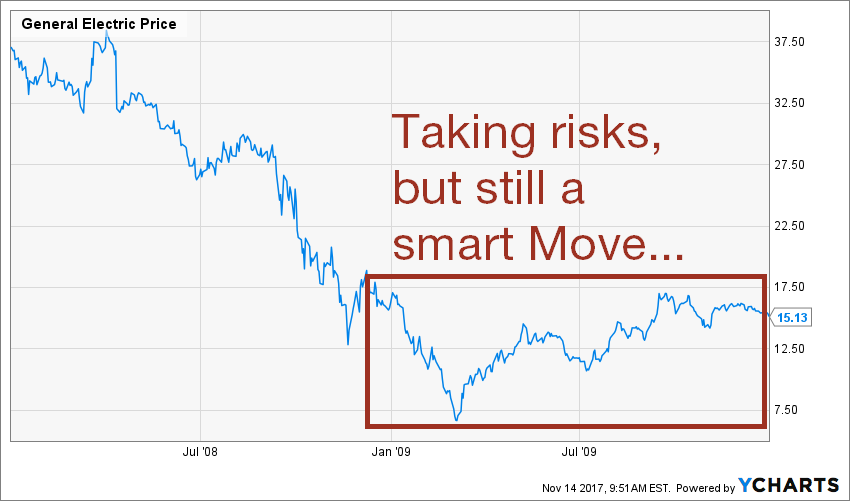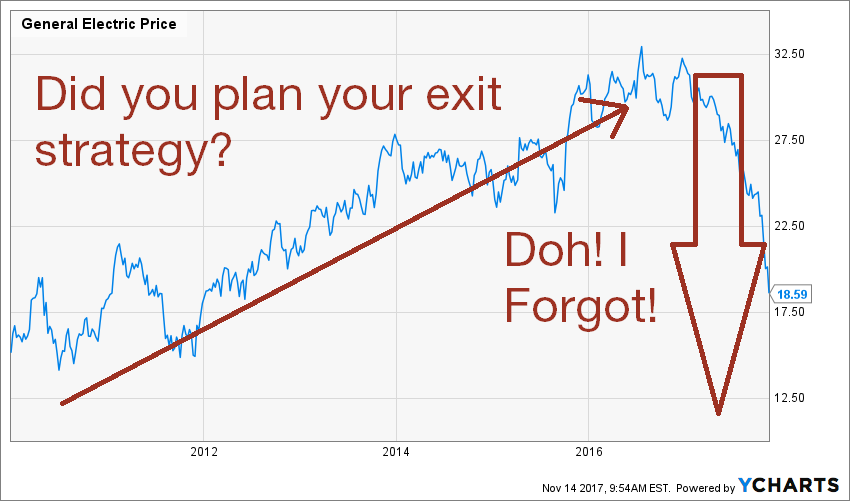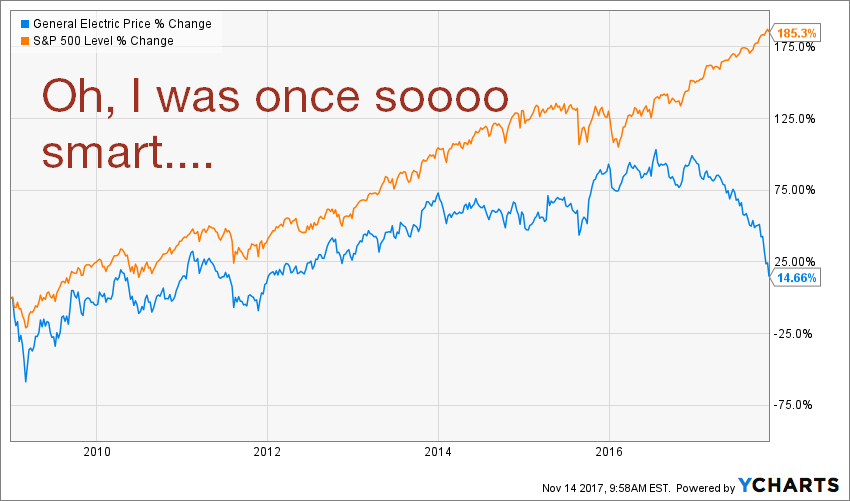I am telling you upfront, this is not the 147th article about GE and its restructuration strategy. However, I will use this example to discuss a fundamental lesson about investing. Trading on hope is a bad strategy. Without a strong investment thesis, buying a stock in the hope that the company will turn on the heat and become a leader again is rarely a good move. At the beginning of the year I listed the reasons why I think General Electrics (GE) is a bad investment. Many investors told me I was wrong because they had the “chance” to pick GE at $8-9 dollar and now they are making huge profits…on paper. I will revisit this concept too. But first, let’s discuss what is happening with GE for a moment.
A tale of an obvious story
Late in October, before analysts started to think about a dividend cut, I wrote: General Electric: Can You Handle Another Dividend Cut? The first 4 points of my article were the following:
- Power, oil and gas as segments are dragging the company down.
- The company is in “budget cut” mode.
- There is no room for dividends anymore.
- Even the most optimistic scenarios show a valuation under $20.
GE has been going nowhere for a while now. It has become too complex to succeed instead of too big to fail. However, investors kept buying shares with great hopes.
- Hope based on the “fact” GE used to trade at $30+ (remember, when a stock trades at $30 once, it doesn’t mean it will go back to that level…ever)
- Hope based on the “fact” GE is a 100+ years old company (remember, companies are not immortal, they can really die)
- Hope based on the margin of safety coming from a very low price (if you bought it at a good price, nothing prevents you from selling it at a good price too!)
Dear investors, remember something; we are not in a Star Wars movie, a New Hope is not always what you need in your portfolio.
Hope is not an investment thesis
As you can see, the three reasons I listed above are not real reasons why an investor should or should not invest his money. Those are stories many investors tell themselves to avoid making their own due diligence and asking the real questions:
- Does GE have a real plan? (They didn’t unless they came up with the dividend cut this week)
- How exactly GE will get back on track? (Their initial plan included: going forward….lame)
- What makes GE great compared to its competitors? (before their new plan this was a complicated question to answer)
- How GE will continue paying/raising their dividend? (then again, many investors “hoped” for better days without a real explanation).
I know I am hammering this point over and over, but I am flabbergasted to see how many investors ignore this crucial step when investing: write down your investment thesis! Think for a moment as if you are GE’s CEO. It is time to discuss some serious points.
- Do you understand what you do? (What is the business model?)
- Do you understand where you are going? (What are your growth vectors?)
- How will you evolve your business? (What your guidance looks like, what are the new projects you are working on?
- How will you pay and increase your dividend? (honestly, if you can’t answer this one, just drop the ball and run).
Hope that things are going to get better is not a strategy. It is an excuse for being lazy with your money. If you only hope to lose weight, it will never happen. If you only hope that you will make more money, that will not happen either. What you need is a detailed plan; a plan for your investments, for your weight loss strategies, and for your next promotion or business idea.
Having a margin of safety isn’t a good strategy either
Many readers keep asking me when do I buy or sell a stock. I solved this eternal struggle a long time ago. I buy and sell a stock when the company meets or stops meeting my investment thesis. To be honest, it was making a lot of sense to put your money in GE during the 2008 crisis. The investment thesis was that Buffett knows what he is doing and that the market is over reacting to GE’s drop. GE Financial was the problem and there is a good chance that new money injected was enough to save the rest of the company from collapsing.

Source: Ycharts
But such an investment thesis is only good for a short period of time. A company such as GE had several problems. Thinking the market is overreacting and that there will be a bounce back is a thesis, but once it is materialized, it is time to think of an exit strategy:

Source: Ycharts
Because when you forget to apply your investment thesis to sell (meaning you sell GE once the stock bounced back) and decided to continue riding on your old gains, your smart investment does not look so great after all…

Source: Ycharts
The solution? Use a Stop Sell as a Poka-Yoke
Do you know what a Poka-yoke is? This is a mechanism to avoid (yokeru) mistakes (poka). Adding a stop sell on such trade is a great mechanism to avoid making the mistake of holding stocks forever based on hope. A stop sell would have got ridden of GE between 2014 and 2016. And then you could have used the money on another trade. If you doubt I use this and I am just good at being a Monday morning quarterback, here is what I just did on Qualcomm (QCOM).
In short…
If you have something to remember from this post here it is:
#1 always trade based on a written investment thesis
#2 use stop sells as a poka-yoke
When in doubt, you are better off with your money in your pocket than up in thin air, don’t you think?
